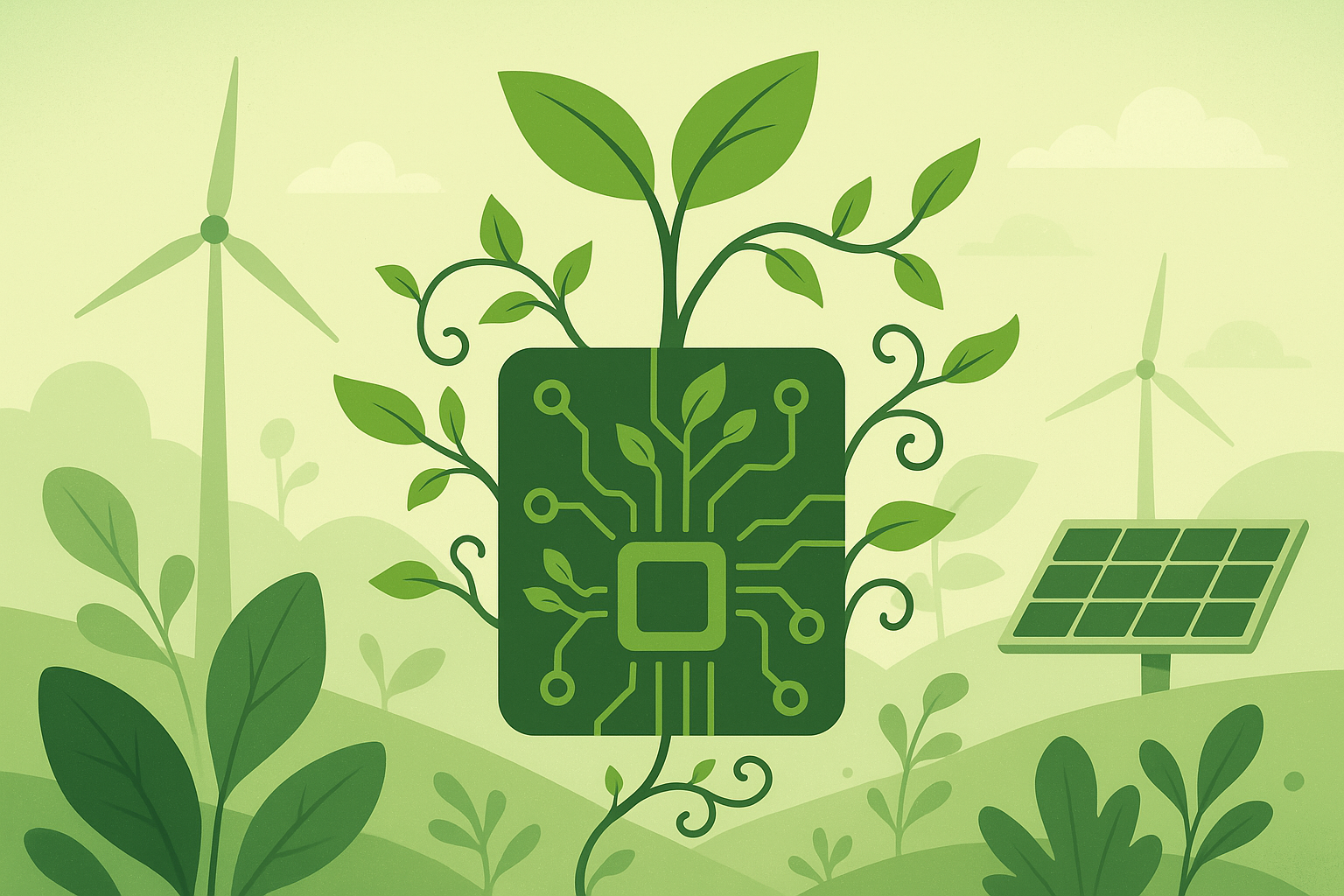Artificial intelligence (AI) is transforming industries, from healthcare to transportation, but its environmental cost is often overlooked. As AI systems grow more complex, their energy demands skyrocket, contributing significantly to carbon emissions. Enter Green AI-a movement dedicated to ensuring AI innovation doesn’t come at the expense of our planet. Based on a comprehensive review of 98 studies published since 2023, this article breaks down what Green AI means, why it matters, and how it’s shaping the future of technology.
Understanding Green AI
Green AI refers to practices that reduce the environmental impact of AI systems while maintaining their performance. Traditional AI development prioritizes accuracy and speed, often ignoring energy consumption. In contrast, Green AI introduces energy efficiency as a core metric, ensuring models achieve high results without excessive resource use.
For example, training a single AI model can emit as much carbon dioxide as 33 round-trip flights between Australia and the UK. Green AI tackles this issue by optimizing every stage of an AI system’s lifecycle, from data collection to deployment.
Why Green AI Matters
The environmental footprint of AI is no longer theoretical. Training advanced LLM require massive computational power, consuming enough electricity to power hundreds of homes for a year. Left unchecked, AI’s energy demands could undermine global efforts to combat climate change. Green AI addresses this by:
Reducing Energy Consumption
By redesigning algorithms and hardware, researchers have achieved energy savings of up to 115% in some cases. Techniques like model distillation (simplifying complex models) and quantization (reducing numerical precision in calculations) slash energy use without sacrificing accuracy. For instance, trimming unnecessary parameters from a neural network can cut training time by half.
Optimizing Data Centers
Data centers powering AI consume vast amounts of electricity, much of which comes from fossil fuels. Green AI promotes transitioning these facilities to renewable energy and improving cooling efficiency. Innovations like liquid-cooled processors and workload balancing algorithms are already reducing emissions in leading tech companies.
Promoting Transparency
Many AI projects don’t disclose their environmental impact, making it hard to assess their sustainability. Green AI advocates for standardized metrics to track energy use and carbon emissions. Tools like CodeCarbon help developers measure and reduce their models’ footprints.
How Green AI Works in Practice
Smarter Training
AI models rely on hyperparameters-settings that guide how they learn. Traditionally, developers test thousands of combinations to find the best setup, a process that guzzles energy. Green AI streamlines this by using efficient search algorithms and early stopping techniques, reducing trials by up to 80%.
Lightweight Models for Edge Devices
Deploying AI on smartphones or IoT devices (edge computing) avoids energy-heavy data transfers to the cloud. Green AI favors smaller models tailored for these devices, such as TinyML, which uses 1,000 times less power than cloud-based alternatives.
Benchmarking for Sustainability
Researchers now evaluate AI models not just on accuracy but also on energy efficiency. Public benchmarks encourage competition, pushing developers to prioritize greener designs. For example, a model that achieves 95% accuracy with half the energy is ranked higher than a less efficient counterpart.
The Road Ahead for Green AI
While progress is promising, challenges remain. Most Green AI research is academic, with limited industry adoption. Tools for measuring and reducing emissions are still scarce, and many developers lack awareness of sustainable practices. However, the field is maturing rapidly. Key priorities include:
- Industrial Collaboration: Tech giants and startups alike must integrate Green AI principles into their workflows.
- Policy Support: Governments could incentivize energy-efficient AI through tax breaks or carbon pricing.
- Holistic Approaches: Sustainability should be considered at every stage, from data collection to hardware disposal.
Conclusion
Green AI isn’t about stifling innovation-it’s about ensuring AI evolves responsibly. By marrying cutting-edge technology with environmental stewardship, we can harness AI’s potential without compromising the planet. As the research shows, the solutions are already here; now it’s time to implement them widely. For a future where smart tech and sustainability go hand in hand, Green AI is the way forward.
Oscar Rodríguez, PhD is currently an AI Engineer at LumApps (France). He holds a Ph.D. in Computer and Control Engineering from Politecnico di Torino, with a focus on AI. His expertise includes Knowledge Representation and Reasoning, Natural Language Processing (LLMs) and Machine/Deep Learning. As president of Greenminds, he applies AI to drive sustainability initiatives.

Leave a Reply